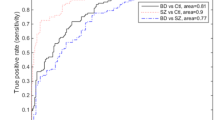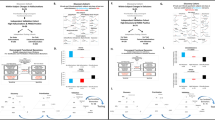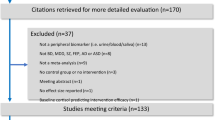Abstract
There is currently considerable imprecision in the nosology of biomarkers used in the study of neuropsychiatric disease. The neuropsychiatric field lags behind others such as oncology, wherein, rather than using 'biomarker' as a blanket term for a diverse range of clinical phenomena, biomarkers have been actively classified into separate categories, including prognostic and predictive tests. A similar taxonomy is proposed for neuropsychiatric diseases in which the core biology remains relatively unknown. This paper divides potential biomarkers into those of (1) risk, (2) diagnosis/trait, (3) state or acuity, (4) stage, (5) treatment response and (6) prognosis, and provides illustrative exemplars. Of course, biomarkers rely on available technology and, as we learn more about the neurobiological correlates of neuropsychiatric disorders, we will realize that the classification of biomarkers across these six categories can change, and some markers may fit into more than one category.
This is a preview of subscription content, access via your institution
Access options
Subscribe to this journal
Receive 12 print issues and online access
$259.00 per year
only $21.58 per issue
Buy this article
- Purchase on Springer Link
- Instant access to full article PDF
Prices may be subject to local taxes which are calculated during checkout
Similar content being viewed by others
References
Guintivano J, Arad M, Gould TD, Payne JL, Kaminsky ZA . Antenatal prediction of postpartum depression with blood DNA methylation biomarkers. Mol Psychiatry 2014; 19: 560–567.
Lencz T, Knowles E, Davies G, Guha S, Liewald DC, Starr JM et al. Molecular genetic evidence for overlap between general cognitive ability and risk for schizophrenia: a report from the Cognitive Genomics consorTium (COGENT). Mol Psychiatry 2014; 19: 168–174.
Schwarz E, Guest PC, Rahmoune H, Harris LW, Wang L, Leweke FM et al. Identification of a biological signature for schizophrenia in serum. Mol Psychiatry 2012; 17: 494–502.
Kapczinski F, Dal-Pizzol F, Teixeira AL, Magalhaes PV, Kauer-Sant'Anna M, Klamt F et al. A systemic toxicity index developed to assess peripheral changes in mood episodes. Mol Psychiatry 2010; 15: 784–786.
Fernandes BS, Berk M, Turck CW, Steiner J, Goncalves CA . Decreased peripheral brain-derived neurotrophic factor levels are a biomarker of disease activity in major psychiatric disorders: a comparative meta-analysis. Mol Psychiatry 2014; 19: 750–751.
Lewczuk P, Kamrowski-Kruck H, Peters O, Heuser I, Jessen F, Popp J et al. Soluble amyloid precursor proteins in the cerebrospinal fluid as novel potential biomarkers of Alzheimer's disease: a multicenter study. Mol Psychiatry 2010; 15: 138–145.
Wolkowitz OM, Mellon SH, Epel ES, Lin J, Reus VI, Rosser R et al. Resting leukocyte telomerase activity is elevated in major depression and predicts treatment response. Mol Psychiatry 2012; 17: 164–172.
Rethorst CD, Toups MS, Greer TL, Nakonezny PA, Carmody TJ, Grannemann BD et al. Pro-inflammatory cytokines as predictors of antidepressant effects of exercise in major depressive disorder. Mol Psychiatry 2013; 18: 1119–1124.
Chen CH, Lee CS, Lee MT, Ouyang WC, Chen CC, Chong MY et al. Variant GADL1 and response to lithium therapy in bipolar I disorder. N Engl J Med 2014; 370: 119–128.
Krishnadas R, Cavanagh J . Depression: an inflammatory illness? J Neurol Neurosurg Psychiatry 2012; 83: 495–502.
Acknowledgements
MB is supported by a NHMRC Senior Principal Research Fellowship 1059660, and has received grant support from NIH, Simons Autism Foundation, Cancer Council of Victoria, CRC for Mental Health, Stanley Medical Research Foundation, MBF, NHMRC, Beyond Blue, Geelong Medical Research Foundation, Bristol Myers Squibb, Eli Lilly, GlaxoSmithKline, Organon, Novartis, Mayne Pharma and Servier. JJM is supported by NHMRC John Cade Fellowship 1056929. AA is supported by Brain and Behaviour Foundation (NARSAD) and the Canadian Institute of Health Research. SJT is supported by the State of Minnesota.
Author information
Authors and Affiliations
Corresponding author
Ethics declarations
Competing interests
MB has been a speaker for Astra Zeneca, Bristol Myers Squibb, Eli Lilly, GlaxoSmithKline, Janssen Cilag, Lundbeck, Merck, Pfizer, Sanofi Synthelabo, Servier, Solvay and Wyeth, and served as a consultant to Astra Zeneca, Bristol Myers Squibb, Eli Lilly, GlaxoSmithKline, Janssen Cilag, Lundbeck and Servier. The remaining authors declare no conflict of interest.
Rights and permissions
About this article
Cite this article
Davis, J., Maes, M., Andreazza, A. et al. Towards a classification of biomarkers of neuropsychiatric disease: from encompass to compass. Mol Psychiatry 20, 152–153 (2015). https://doi.org/10.1038/mp.2014.139
Received:
Revised:
Accepted:
Published:
Issue Date:
DOI: https://doi.org/10.1038/mp.2014.139
This article is cited by
-
Are Advanced Oxidation Protein Products (AOPPs) Levels Altered in Neuropsychiatric Disorders? An Integrative Review
Molecular Neurobiology (2024)
-
Functional neuroanatomy of mania
Translational Psychiatry (2022)
-
Investigation of the Molecular Role of Brain-Derived Neurotrophic Factor in Alzheimer’s Disease
Journal of Molecular Neuroscience (2022)
-
Neurodegenerative Disorders of Alzheimer, Parkinsonism, Amyotrophic Lateral Sclerosis and Multiple Sclerosis: An Early Diagnostic Approach for Precision Treatment
Metabolic Brain Disease (2022)
-
Current and Future Vistas in Bipolar Disorder
Current Behavioral Neuroscience Reports (2020)



